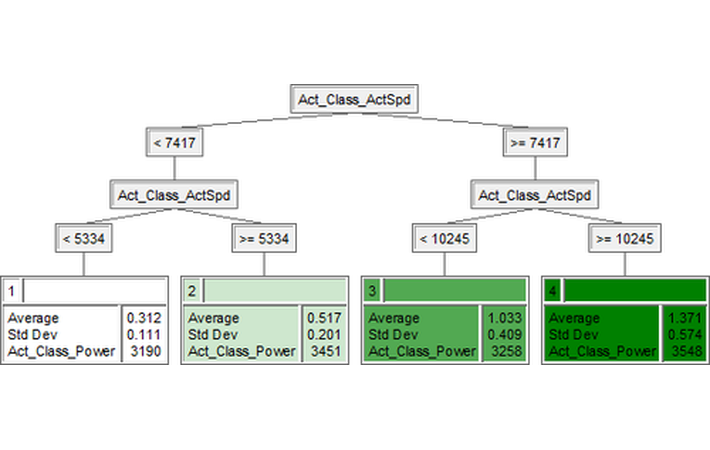
Published on 11/08/2016 | Operations
Knowledge and Data are a powerful combination
Predictive Maintenance delivers the clearest benefit of any Industrial Internet of Things (IIOT) Initiative. The ability to accurately predict downtime, outages and failures in equipment and process, enables interventions before things go wrong.
The Predictive Maintenance lifecycle includes data capture, monitoring, anomaly detection, diagnosis, notification and resolution. Most IIOT solutions will address this lifecycle by applying Predictive Analytics to live operational data streams, using a cloud analytics service. This approach is valid, but limited, in both its accuracy (of diagnosis) and its outcome (action / response).
The complete Predictive Maintenance solution must combine the prediction of the event from data (using Predictive Analytics for anomaly detection) with rapid, accurate diagnosis and resolution (using rules-based knowledge automation).
When this combination of intelligence is deployed in the right place (edge, fog, cloud and/or mobile), this provides the most complete and powerful Predictive Maintenance solution.
Historically, the focus has been on preventative, rather than predictive maintenance, with rigid regular schedules in place driving huge costs in asset downtime, labour and parts.
The availability of real-time data, delivered by connectivity, sensors, edge devices and cloud services, has revolutionised the potential for predictive maintenance strategies in manufacturing, oil and gas, utilities, transportation and facilities management. The typical opportunities are:
Reduced wrench time – the largest proportion of maintenance cost is in operational engineer’s time. This includes manpower spend on routine maintenance, or on emergency responses to fix/replace machinery that fails between inspections.
Equipment downtime - About 5% of the average factory’s production is lost to downtime every year, costing the global manufacturing community roughly $647bn annually. When revenue is driven by Equipment utilisation this impact is greater still.
Field-force efficiency – Repeat inspections and mis-allocation of skills/expertise to site drive up costs and impact customer experience. Multiple visits are often required to diagnose a problem accurately, before prescribing the right skills, experience and parts to fix the asset.
Other considerations include inventory management, where stock levels are kept high for all maintenance eventualities; and safety, where unknown equipment problems can raise the risk of safe working. Customer experience is a key consideration, in terms of the collective negative impact of poor equipment performance, servicing and the pass-through impact on asset availability.
If there is a value chain for the IIOT then it would focus on the time taken between predicting an event, determining a root cause, and correcting the problem. By keeping this chain of events as short as possible, all of the benefit areas are addressed; there is less downtime, the right skills are deployed and ultimately you have a more productive operation and happy customers. The key supporting technologies in this value chain are as follows:
Anomaly Detection and Predictive Analytics
Anomaly Detection and Predictive Analytics provide an early warning of problems developing on manufacturing plant and equipment. Problems can be detected days or weeks before an actual breakdown avoiding losses in production due to unplanned downtime.
Predictive Analytics are developed using XpertRule Data Mining, which allows the rapid development of hybrid AI / statistical models from plant operating data. Once developed, the Predictive Analytics are run in real time against incoming streams of data from IoT connected equipment, to provide real-time detection of anomalies in performance. XpertRule Data Mining enables processing of multiple streams with a high frequency of data updates. This is also scalable across a large number of assets/equipment and sensors.

- Data mining models are generated from base case operating data and updated on a regular basis.
- Key equipment variables are then monitored against predicted target values in real time & 24/7
- An increase in the difference between actual and predicted values provides an early warning of an operating problem
Most IIOT solutions apply Predictive Analytics to live operational data streams, using a cloud analytics service. The main appeal of the technology is its perceived benefits of automating intelligence by data analysis alone.
Predictive Analytics works well for anomoly detection and event prediction, but industry experience & knowledge are also needed for an accurate, rapid root cause analysis and response. This requires rule-based automation of manufacturing / process expertise.
To automate the full lifecycle of plant / equipment monitoring, diagnosis and trouble-shooting response, requires a technology capable of enabling every step of the IIOT value chain.
XpertRule provides the complete solution - predictive analytics and rules automation in one platform - deployed at the Edge, Fog, Cloud and mobile.
Diagnosis and Root Cause Analysis
Where data and predictive analytics can tell us WHEN and HOW an event has occurred, or is likely to occur again, then knowledge and experience is the best resource to tell us WHY this happened in the first place. Automation of this knowledge is critical to delivering accurate diagnosis and response.
The XpertRule Rules Engine is used to monitor combinations and types of anomaly, or the likely root cause of any combination of alerts, and then diagnoses the root cause of any developing problem. This is automated by the authoring of expert knowledge, in the form of Rules derived from domain experts, combined with analysis of records from previous fault conditions.
How does this work?
- Patterns are identified for different fault conditions based on combinations of anomalies generated by Predictive Analytics
- Rules are then developed to automate the detection of those conditions, based on a combination of domain expertise and records of previous fault conditions
The IIOT value chain we have described above, involves a number of technologies including Data Mining, Predictive Analytics, Rules Automation, and Troubleshooting Workflow. These capabilities must then be deployed in the right area, from the edge, to Fog, cloud and mobile device, or any combination of those.
By deploying rules-based alarm handling closer to the IIOT Edge, then the volume and frequency of alarms can be managed closer to the event itself, meaning only the most critical of alerts are passed to the cloud for diagnosis and response.
Multiple solution providers’ address one or more of these capabilities, XpertRule delivers them all in one fully integrated solution.
The XpertRule unique value proposition
No other IIOT automation solution offers decision management, rules automation and Predictive analytics in one integrated platform.
The graphical browser environment for developing predictive models, rules bases and decision flows is easy to use directly by non-technical subject matter experts and yet comprehensive enough to meet the needs of solutions developers and integrators.
No other decision management, rules automation and Predictive analytics solution can be deployed to any part of the IIOT ecosystem (edge, fog, cloud or mobile) in order to achieve reliable and fast decision making which can analyse critical data in real time.
The XpertRule light footprint / high performance Node.js rules, decisions and analytics engine can run anywhere from a Raspberry pi to an edge appliance to cloud to mobile. Furthermore the engine can run is embedded decision making mode (edge, fog, cloud) or user interactive expert system mode (desktop, mobile).
For more information:
http://xpertrule.com/distributed-intelligence-for-iot/
e: info@xpertrule.com
This article was originally posted on LinkedIn.